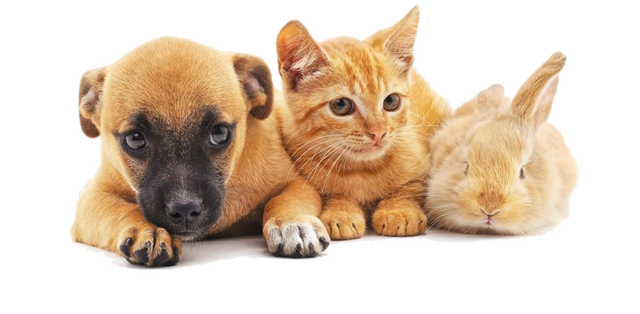Panel discussion on...
Pet food
Insect protein and oil for pets:
high performing novel ingredients to unlock a more healthy and sustainable future for your pets
Trends in sustainability and the use of novel ingredients have become ubiquitous in the human food industry over the last decade. From cell-cultured meat, precision fermentation, to further advancements of various plant-based alternatives, there has been no shortage of new developments promising to both meet nutritional needs while also being more considerate of our planet when compared to traditional options.
The pet food industry has become a fast follower here as humanization becomes a more and more prevalent trend in the space—consumers increasingly want to feed their pets in a similar way to how they feed themselves. “As the world is looking for healthier, more natural and sustainable solutions, the petfood industry is initiating its transition to adopt alternative ingredients. Sustainability is not a plus anymore, it is a requirement for many”, says Nicolas Hamelin, petfood product manager at Innovafeed. Additionally, major global players including Nestle Purina, Mars Petcare, and Hill’s Pet Nutrition (Colgate-Palmolive), have made ambitious environmental commitments over the coming decades and given that the ingredients of pet food and treat products are among the largest source of emissions in the industry, the exploration of novel ingredients with a lower carbon footprint has become a major focus. Peruse a “New Product Showcase” at any pet food conference and you’ll find brands of all sizes promoting the use of novel ingredients and touting sustainability right alongside their functional benefits. One of the most promising sources might be a surprise for those uninitiated: insects.
Insects are seen as one of the potential winners of this pet food movement for several key reasons. First, insects are among nature’s most powerful “upcyclers” with the ability to efficiently turn low-grade feedstock—from highly available sources ranging from agricultural byproducts to pre- or post-consumer waste—into high-value ingredients with a low environmental impact. Second, insects are already a part of the natural diet of nearly all animals, including wild dogs, cats, reptiles, birds, fish, etc. Third, the unique properties of insect ingredients have demonstrated promising potential functional benefits to pets. In the last ten years over $1.2BN has been invested in insect companies cultivating tremendous strides in insect science and vertical farming technology. This has allowed insect ingredients to reach industrial scale—and therefore achieve status as more immediate meaningful alternatives—much more quickly than other novel ingredients.
There are three main insects raised for pet food ingredients: black soldier fly larvae (Hermetia illucens, BSFL for short), mealworms (Tenebrio molitor), and crickets (Acheta domesticus). Since the black soldier fly is both the most prevalently farmed species for its superior efficiency and the species of choice of Innovafeed, this article will focus here.
Black soldier fly larvae ingredients for pet food can come whole (via whole ground meal, in whole dried larvae form, or live) or more typically in a defatted meal and a mechanically extracted oil which can be derived from either a wet or dry rendering process.
Defatted black soldier fly larvae meal is a highly digestible protein source with minimum Crude Protein levels ranging from 50-55% and can act as a replacement or complement to premium animal protein sources like fishmeal and poultry meal in pet food and treat formulation. As a novel protein source, it’s been demonstrated to provide relief in the diets of animals who have developed sensitivities to more traditional protein sources (1)—estimated to be more than 1/3 of all dogs, for example. Some of the unique aspects of insect ingredients have also showed promise functionally including the presence of chitin as a prebiotic fiber and the presence of over 50 Antimicrobial Peptides (AMPs) to drive immune support (2,3).
Mechanically extracted black soldier fly larvae oil is a premium energy source and acts as a replacement or complement to animal fat or vegetable oils in pet food and treat formulation. Its fatty acid profile is unique in the insect realm, boasting high levels of lauric acid, a medium-chain triglyceride (MCT) known for its antimicrobial properties and antioxidant potential. Both black soldier fly meal and oil have demonstrated strong palatability results across a variety of species and are versatile for use across different applications and formats in pet food (4).
In addition to the nutritional benefits previously described, insect ingredients are seen as highly sustainable, with black soldier fly derived ingredients in particular requiring significantly less land, energy, and water to produce comparable amounts of traditional proteins and oils. Taking advantage of the insect’s short lifespan, its omnivorous ability to consume a variety of feedstocks, and the black soldier fly’s preference for communal living in tight quarters, this natural efficiency can be even further optimized via key design decisions.
Innovafeed, for example, uses their signature “industrial symbiosis” production model to co-locate with the two main production inputs of feedstock and energy. On the feedstock side, a pipe connection to a neighboring grain processor transmits still wet agricultural byproducts used as feedstock directly to the facility, saving on both costs and environmental impacts on drying and transportation. On the energy side, a pipe connection to a neighboring green energy producer captures fatal energy via a hydro-condenser that would have otherwise dissipated into the atmosphere, with this “waste energy” being used to power approximately 60% of the insect plant in Nesle, France, the largest in operation worldwide.
A published life cycle assessment (5) (LCA) revealed that the “industrial symbiosis” production model introduces a meaningful change in terms of environmental footprint by reducing CO2 emissions by 80% and fossil resources depletion by 83% compared to a no-symbiosis model. The higher sustainability of the insect protein meal and insect oil produced using the symbiosis model was also demonstrated.CO2 emissions were reduced by at least 84% when compared to the leading ingredient alternative in petfood: poultry meal. “When it comes to insect ingredients, there are as many insect companies as insect ingredients, ensuring that the industrial model allows a higher environmental performance through a LCA compared to alternative animal protein is key” says Hamelin.
With many brands already leveraging insect ingredients in pet food, like Arch, YORA, Jiminy’s, Tomojo, Vobra or Hill’s Pet Nutrition, and more being announced every quarter, this trend appears to have significant staying power. Pet parents are also more and more keen to include insect ingredients in their pet’s diets. In a recent study published by GlobalPETS Magazine (6), “nearly half of the respondents said they would be open to giving their pets insect protein (7)”. What do you think is the future of novel ingredients and sustainability in pet food?
References and notes
- Lee et al. - Clinical application of insect-based diet in canine allergic dermatitis – 2021. DOI: 10.14405/kjvr.2021.61.e36
- Vogel, H., Müller, A., Heckel, D., Gutzeit, H., Vilcinskas, A., Nutritional immunology: Diversification and diet-dependent expression of antimicrobial peptides in the black soldier fly Hermetia illucens, Developmental and Comparative Immunology (2017)
- A.Moretta, R.Salvia, C.Scieuzo, A.Di Somma, H.Vogel,
- P.Pucci, A.Sgambato, M.Wolff & P.Falabella – A bioinformatic study of antimicrobial peptides identified in the Black Soldier Fly (BSF) Hermetia illucens – 2020
- G. Bosch and K.S. Swanson (2020) – Effect of using insects as feed on animals: pet dogs and cats - Journal of Insects as Food and Feed, 2021; 7(5): 795-805
- PhI CPV, Walraven M, Bézagu M, Lefranc M, Ray C. Industrial Symbiosis in Insect Production—A Sustainable Eco-Efficient and Circular Business Model. Sustainability. 2020; 12(24):10333. https://doi.org/10.3390/su122410333
- GlobalPETS - PETS International Magazine September 2023 - page 10-11. (s. d.). https://view.publitas.com/pets-international-1/petsinternationalmagazineseptember2023/page/10-11

Panelists










